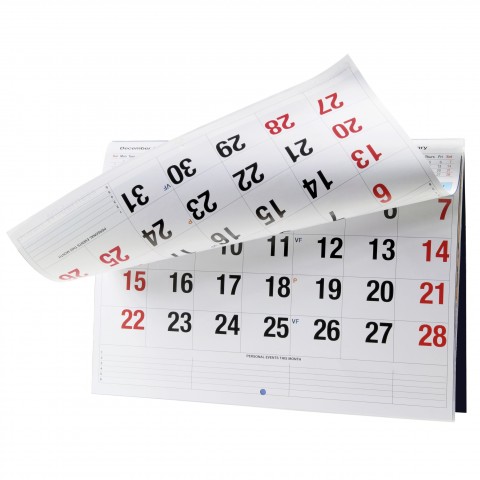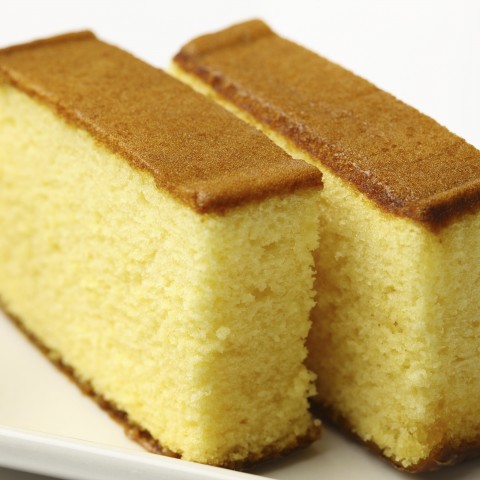
Do you know there are different ways to count various objects in Korean?
Unlike in English, where you can simply say “I’d like two pizzas, please,” in Korean, you have to say 피자 두 판 주세요 (pija deu pan juseyo) which means “Please give me two discs of pizza.” This is because the Korean counter for pizza, which is flat and round like a disc, is 판 (pan) meaning “disc.”
Here’s an overview of how these counters in Korean grammar work:
| Korean Number + Countere.g. 두 (meaning “two”) + 판 (counter for a flat and round object) |
As you can see from this example, in Korean, you need to add a specific counter depending on the object that you’re discussing. In Korean grammar, counters are essential in being understood.
However, there’s no need to fret—if you’re a beginner, you’ll be able to make yourself understood by using a handful of the most frequently used counters, such as:
- 개 (gae) or “counter for inanimate objects”
- 명(myeong) or “counter for persons”
In the long run, it’s better to know which counter is used for each object, though. If you’re wondering how to study Korean counters, you’ve come to the right starting place!
In this blog article, we hope to answer the question “What are Korean counters?” and we’ll also be focusing on some Korean top counters that you’ll run across when studying Korean. However, before we go into the specifics, you need to know a bit about the Korean counting system. So if you’re not familiar with Korean numbers, check out our Korean Numbers article.

1. The Most Common Counters

There are many counters in Korean, but if you’re a beginner, don’t try to memorize all Korean counters as this will just cause confusion. Just remember the most commonly used counters, and take it from there.
We’ll introduce some Korean words for counters counters that you’ll definitely find yourself using—especially when you have no idea which counter to use! We’ll also provide you with Korean counters examples, so that you know just how to use them.
1- People, Objects, and Animals
We’ll start this article with the very most common Korean noun counters. These are the Korean counters you’ll be seeing, hearing, and using most often. Ready to expand your counters in Korean vocabulary? Let’s get started!
1. The Counter for Inanimate Objects: 개 (gae)
This counter can be translated as “thing” in English and is one of the most widely used counters; you can use it for most inanimate objects. So while there may be a separate counter for various objects, if you don’t know the counter for it, you can simply use 개 (gae) to be understood, although it’s better to use the specific counters. But keep in mind that you can’t use this counter when you’re counting animate objects such as dogs or people.
For example, the counter for pens/pencils is 자루 (jaru).
- 연필 한 자루 (yeonpil han jaru) or “one pencil”
However, you could simply use 개, the inanimate object counter.
- 연필 한 개 (yeonpil han gae) or “one pencil”
2. The Counter for People: 명 (myeong)
This counter can be used when counting people. You can use this counter for anyone—men, women, children, and the elderly.
Example:
- 참가자는 네 명입니다
Chamgajaneun ne myeongimnida
“There are four participants.”
3. The “Polite” Counter for People: 분 (bun)
When you’re counting someone who’s older than you, or of a higher social status, you can count them using this counter. That’s why you’ll often hear this counter used at hotels, restaurants, and cafes.
Example:
- 세 분 이세요?
Se bun iseyo?
“Are you a group of three?” or literally “Are you three people?”
This phrase can be used when a staff member in a restaurant wants to confirm how many people your group has.
4. The Counter for Animals: 마리 (mari)
This is a counter used to count any type of animal, including dogs, cats, birds, and even fish and insects. Keep in mind that this counter can’t be used for human beings (unless you want to offend them!).
Example:
- 강아지를 한 마리 키우고 있어요.
Gangajireul han mari kiugo isseoyo.
“I have (am raising) one dog.”
5. Counter for Ages of People or Animals: 살 (sal) and 세 (se)
These two counters are used to count the ages of people or animals.
However, there is a difference between the two counters:
- 살 (sal) can be used to count the age of people or animals, and is used only with Native Korean numbers. It’s more commonly used in colloquial situations.
- 세 (se), which is a more formal counter for age, can only be used to count the age of people, not animals. And you can only use this counter with Sino-Korean numbers.
Also, keep in mind that you can’t use 살 (sal) or 세 (se) to count the age of inanimate objects such as buildings or towns.
Example:
- 저는 올해 스물 다섯 살입니다.
Jeoneun olhae seumul daseot ssalimnida.
“I’m twenty-five years old this year.”
- 그녀는 올해 이십오 세입니다.
Geunyeoneun olhae isipo seimnida.
“She is twenty-five years old this year.”
- 우리 개는 세 살입니다.
Uri gaeneun se salimnida.
“My dog is three years old.”
2- Time
1. Counter for Years: 년 (nyeon)
This counter literally means “years” and originates from a Chinese character. Unlike the counter 살 (sal), you can use this counter when you’re counting the ages of inanimate objects. Let’s look at an example.
- 이 도시는 천 년 되었습니다.
I dosineun cheon nyeon doieosseumnida.
“This city is 100-years-old.”
When you’re using this counter, it’s better to use the verb meaning “to become” at the end of a sentence like this one.
2. Counter for Months: 달 (dal)

This counter literally means “months.”
- 작년에 세 달 동안 한국을 여행했어요.
Jangnyeone se dal dongan hangugeul yeohaenghaesseoyo.
“I traveled to Korea for three months last year.”
3. Counter for Days: 일 (il)
This counter literally means “days.” You use a Sino-Korean number with this counter. Please note that there are also pure Korean words for days. You can find the list below.
- 30일간 비가 오지 않았어요.
Samsibilgan biga oji anasseoyo.
“It hasn’t rained for thirty days.”
Pure Korean Words for Days:
- 하루 (Haru)
- 이틀 (Iteul)
- 사흘 (Saheul)
- 나흘 (Naheul)
- 닷새 (Datsae)
- 엿새 (Yeotsae)
- 이레 (Ire)
- 여드레 (Yeodeure)
- 아흐레 (Aheure)
- 열흘 (Yeolheul)
4. The Counter for Reading Hours: 시 (si)
This counter is used to read hours/time.
- 지금은 아홉 시입니다.
Jigeumeun ahop si-imnida.
“It’s nine o’clock now.”
시 literally means “hours,” and you can use this counter to read the time. For example, “one o’clock” would be 한 시 (han si). So if you’re asked about the time, you can answer by using this counter.
5. The Counter for Reading Hours: 분 (bun)
This word means “minutes.” Unlike the usage of the counter 시 (si), you should use Sino-Korean numbers when you’re reading minutes. For example:
- 지금은 두 시 이십이 분입니다.
Jigeumeun du si isibi bunimnida.
“It’s 2:22.”
In English, all numbers can be read as “2.” However, in Korean, you should tell the time with pure Korean numbers, and minutes with Sino-Korean numbers.
6. The Counter for Reading Hours: 초 (cho)
This word means “seconds.” Just like 분 (bun), you use Sino-Korean numbers when you’re reading seconds.
- 3초가 걸렸어요.
Samchoga geollyeosseoyo.
“It took three seconds.”
3- Beverages, Bottles, and Books
1. The Counter for the Number of Beverages: 잔 (jan)
This counter literally means “a glass.” This is a counter you use to count the number of glasses—not the glasses that you wear, but the glasses you use for drinks—or cups. When you need water, or any other beverage that can be contained inside a glass or a cup, you can use this counter. In Korean, you should literally say “One glass of water, please” with the right counter, which is: 물 한 잔 주세요 (Mul han jan juseyo).
For example:
- 맥주 한 잔 주세요.
Maekju han jan juseyo.
“Please give me a glass of beer.”
- A: 잔은 몇 개 드릴까요?
Janeun myeot gae deurilkkayo?
“How many cups do you need?”
B: 두 잔 주세요.
Du jan juseyo.
“Please give us two cups.”
2. The Counter for the Number of Bottles: 병 (byeong)

This word literally means “bottles.” You can use this when you count bottles of water or beverages. And it’s not just for beverages—you can count the number of any type of bottle using this counter.
- 콜라 한 병을 마셨습니다.
Kolla han byeongeul masyeotseumnida.
“I drank a bottle of Coke.”
3. The Counter for Books: 권 (gwon)
This is the counter that you’ll use for books, magazines, notebooks, photo albums, or anything that has pages that you can flip over. For example:
- 잡지 한 권과 노트북 한 권 주세요.
Japji han gwongwa noteubuk han gwon juseyo.
“Please give me one magazine and one notebook.”
- 책 한 권 빌려도 될까요?
Chaek han gwon bilryeodo dwelkkayo?
“Can I borrow a book?”
- 책상에 책이 열 권 있습니다.
Chaeksange chaegi yeol gwon itseumnida.
“There are ten books on the desk.”
4- Buildings & Machines
1. The Counter for Buildings or Houses: 채 (chae)
This can only be used when you’re counting the number of places such as homes, apartments, or buildings.
- 이 동네에는 집이 오십 채 있습니다.
I dongneeneun jibi osip chae itseumnida.
“In this town, there are fifty houses.”
2. The Counter for Vehicles or Machines: 대 (dae)
This counter can be used when counting items made in factories or machines, such as cars, bicycles, computers, and mobile phones.
- 자동판매기가 세 대 있습니다.
Jadongpanmaegiga se dae itseumnida.
“There are three vending machines.”
- 저는 휴대전화가 두 대 있습니다.
Jeoneun hyudaejeonhwaga du dae itseumnida.
“I have two mobile phones.”
5- The Counter for the Number of Places: 곳 (got)
This counter can be used when counting the number of places. For example, when you count the number of museums that you visited during your trip, you can use this counter. This counter literally means “place,” so it can be used for purposes other than counting. For example, you can also use this word to point out a place, such as “this place” and “that place.”
- 이번 유럽여행에서 나는 박물관을 다섯 곳 방문했습니다.
Ibeon yureobyeohaengeseo naneun bangmulgwaneul daseot got bangmunhaetseumnida.
“During the trip to Europe, I visited five museums.”
6- Nature
1. The Counter for Trees: 그루 (geuru)
This word literally means “stump” in Korean. This can also be used when counting trees, but not other plants such as flowers or grass.
- 정원에 나무를 한 그루 심었습니다.
Jeongwone namureul han geuru simeotseumnida.
“I planted one tree in the front yard.”
2. The Counter for Flowers or Grass: 송이 (songi)
This word literally means “stem” in Korean.
- 이 공원에는 나무 다섯 그루와 꽃 두 송이가 있습니다.
I gongwoneneun namu daseot geuruwa kkot du songiga itseumnida.
“There are five trees and two flowers in this park.”
7- The Counter for Things that Look Like Paper: 장 (jang)
In the past, this counter was only used for counting paper. However, nowadays, people use this counter to count objects that look like paper, such as credit cards, CDs, and bills.
- 봉투 안에는 편지가 다섯 장 들어있었습니다.
Bongtu aneneun pyeonjiga daseot jang deureoiseotseumnida.
“In the envelope, there were five letters.”
8- The Counter for the Number of Floors: 층 (cheung)
This word literally means “layers.” You can use this counter when counting the number of floors in any type of building, such as houses or regular buildings.
- 우리 집은 육 층에 있습니다.
Uri jibeun nyuk cheunge itseumnida.
“My home is on the sixth floor.”
9- The Counter for the Number of Times: 번 (beon)
This counter is for counting the number of times, rather than objects. When you’re counting the number of times that you did something, such as watching a movie or going to the gym, you can use this counter.
- 나는 이 영화를 여섯번 봤습니다.
Naneun i yeonghwareul ryeoseot beon bwatseumnida.
“I’ve watched this movie six times.”
- 비밀번호를 세 번 틀리면 은행 계좌가 막힙니다.
Bimilbeonhoreul se beon teullimyeon eunhaeng gyejwaga makimnida.
“If you enter the wrong PIN number three times, your bank account will be locked.”
10- The Counter for Any Kind of Pieces: 조각 (jogak)

This counter can be used for any kind of pieces, such as pieces of a cake or pieces of broken machines.
- 치즈케이크 한 조각 주세요.
Chijeukeikeu han jogak juseyo.
“One piece of cheesecake, please.”
11- Counter for the Number of Items of Clothing: 벌 (beol)
You can use this counter for any type of clothing, such as shirts, skirts, and jeans.
- 장롱에 셔츠가 열 벌 있습니다.
Jangnonge syeocheuga yeol beol ritseumnida.
“There are ten shirts in the closet.”
12- The Counter for Anything that You Wear on Your Feet: 켤레 (kyeolle)
This counter can be used for anything that you wear on your feet, such as socks or shoes. Since this counter is for a pair of socks or shoes, make sure you use this counter only when counting pairs. When you need to count an individual item, such as a single sock, you can use the counter Gae, which is for general inanimate objects.
- 이번 여행에는 양말 다섯 켤레를 가져갈 겁니다.
Ibeon yeohaengeneun yangmal daseot kyeollereul gajyeogal geomnida.
“I’m going to pack five pairs of socks for this trip.”
13- The Counter for Food Items Served in a Dish: 접시 (jeopsi)
This word literally means “dishes,” but people use this counter when counting food items served in a dish or plate. Instead of counting the food directly, Korean people count the number of dishes; it sounds more polite because it’s less direct. It can be used for noodles, dumplings, or mixed rice dishes, for example. When Korean people count the number of actual dishes or plates, they use the counter Gae, which can be used for inanimate objects in general.
- 파스타를 다섯 접시 주문했습니다.
Paseutareul daseot jeopsi jumunhaetseumnida.
“I ordered five dishes of pasta.”
14- The Traditional Counter for the Size of an Area: 평 (pyeong)
Do you know the traditional counter for the size of an area? Although more people are using square meters these days, you can still find this counter when Korean people talk about the size of their house or rooms. The answer is 평 (pyeong).
The size of one 평 (pyeong) is around 3.3 square meters. In the past, Korean people measured spaces using this counter, so people use it more than square meters.
- 우리 집은 33평 입니다.
Uri jibeun 33pyeong imnida.
“My house is about 33 peyong.” (Or 109 square meters.)
2. Even More Korean Counters

1- The Counter for Inanimate Objects: 가마 (gama)
Do you know the special counter for bags of rice? Rice is the main ingredient in Korean dishes, so it has a special counter just for the bags. The answer is: 가마 (gama).
- 쌀 한 가마 주세요.
Ssal han gama juseyo.
“Please give me one bag of rice.”
When you count a grain of rice, you can use the counter 톨 (tol) instead.
2- The Counter for Animals: 손 (son)
This counter sounds exactly the same as the word meaning “hands.” When it’s used as a counter, you can use it for counting a pair of fish. Let’s take a look at an example:
어머니가 고등어 한 손을 사왔습니다.
Eomeoniga godeung-eo han soneul sawasseumnida.
“My mother bought one pair of mackerel.”
When you visit a Korean market, you’ll be able to find people using this counter when they’re buying fish.
3- The Counter for the Level of Difficulty: 단 (dan)
This counter means “steps,” but people also count the level of difficulty or proficiency with this counter.
- 저는 태권도 이 단입니다.
Jeoneun taegwondo i danimnida.
“I’m level 2 in Taekwondo.”
4- The Counter for Leaves: 잎 (ip)

The word itself means “leaves.” You might not use this counter in daily life, but it’s used a lot in Korean poetry and novels.
- 하늘에서 낙엽 한 잎이 떨어졌다.
Haneureseo nagyeop han ipi tteoreojyeotda.
“One leaf fell down from the sky.”
For more examples on counters, KoreanClass101 has more counters in Korean lessons! Please check out our lesson series on Korean Counters for Beginners.
3. Counters and When to use Sino-Korean Numbers vs. Native Numbers
1- Use Native Numbers for:
- Objects (개-gae)
- Animals (마리-mari)
- People (명-myeong)
- Age (살-sal)
- Shoes/Socks (켤레-kyeolle)
- Clothes (벌-beol)
- Buildings (채-chae)
- Machines (대-dae)
2- Use Sino Numbers for:
- Age (세-se)
- Weight [kilograms, pounds, etc.]
- 킬로그램 (kilogeuraem) means “kilogram”
- 파운드 (paundeu) means “pound”
- Distance
- 킬로미터 (kilomiteo) means “kilometers”
- Year (년-nyeon)
- Grade [1st grade, etc.] (년-nyeon)
4. Conclusion: How KoreanClass101.com Can Help You Learn Korean
We hope you enjoyed learning about Korean counters with us! Did you take away anything valuable from this lesson? Is there something you’re still struggling with? Let us know in the comments!
To continue learning about Korean culture and the language, visit us at KoreanClass101.com! We offer an array of insightful blog posts, free vocabulary lists to strengthen your word bank, and even an online community where you can talk about lessons with other students. Of course, you can also create or upgrade to a Premium Plus account to take advantage of our MyTeacher program, and learn Korean with your own personal teacher!
All of your studying and practice will reap rewards for you, and you’ll be speaking Korean like a native before you know it. KoreanClass101.com will be here with you on each step of your Korean language-learning journey!










